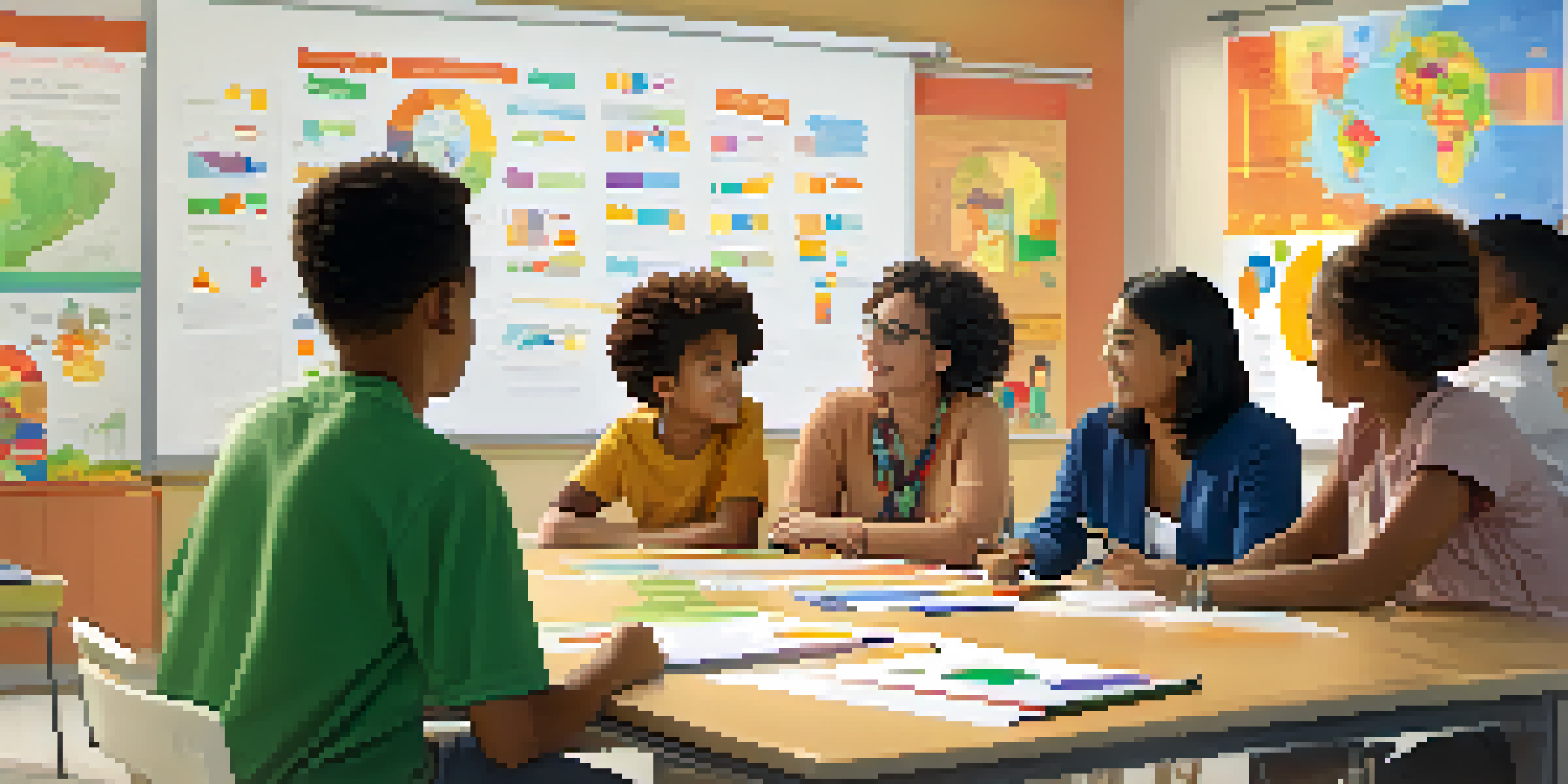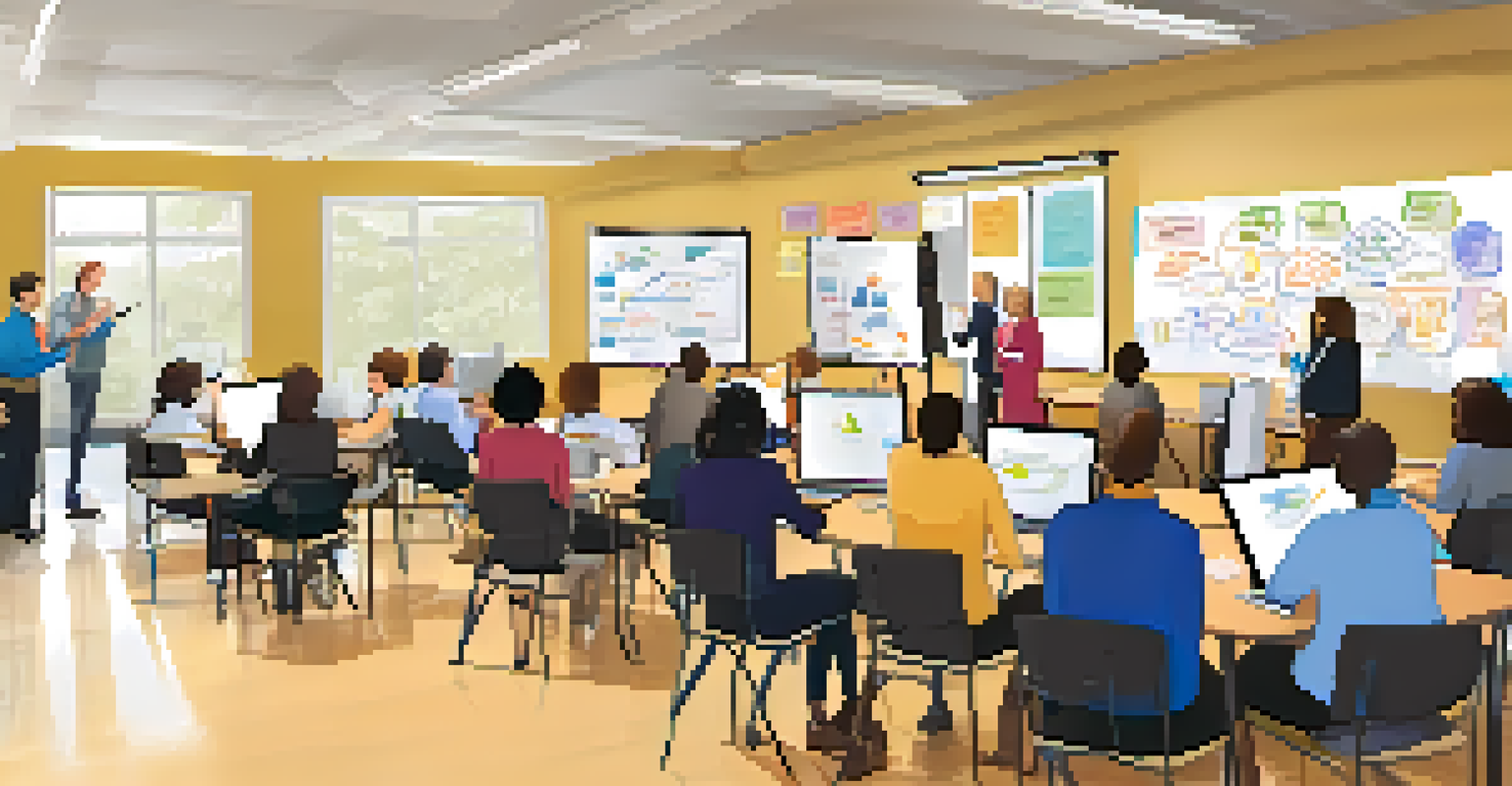Improving Educational Outcomes Through Collaborative Policy Making

Understanding Collaborative Policy Making in Education
Collaborative policy making involves various stakeholders working together to shape educational strategies. This can include teachers, parents, administrators, and even students. By bringing diverse perspectives to the table, it fosters a more comprehensive understanding of the challenges faced in education.
Collaboration allows teachers to take advantage of each other's strengths and helps them to mitigate their weaknesses.
For instance, when a school district seeks to improve student performance, input from teachers can highlight specific classroom challenges, while parents can share insights about their children's needs at home. This synergy helps create policies that are not only practical but also more effective in addressing real issues.
Moreover, engaging stakeholders in the policy-making process ensures that everyone feels invested in the outcomes. This collective ownership can lead to better implementation and support for new initiatives, ultimately benefiting the educational environment as a whole.
The Role of Data in Collaborative Policy Making
Data plays a crucial role in informing collaborative policy making. By analyzing student performance metrics and demographic information, stakeholders can identify specific areas that require attention. This data-driven approach helps ground discussions in reality, rather than relying solely on opinions or anecdotal evidence.

For example, if a school finds that students in a certain demographic are underperforming, stakeholders can work together to tailor interventions that specifically address those students' needs. This could involve additional tutoring, mentoring programs, or even adjustments to curriculum design.
Collaboration Enhances Policy Making
Engaging diverse stakeholders in education policy creation leads to more effective and practical solutions.
Ultimately, using data not only strengthens the decision-making process but also fosters transparency among stakeholders. When everyone understands the rationale behind certain policies, it builds trust and encourages a collaborative spirit.
Building Trust Among Stakeholders
Trust is the bedrock of successful collaborative policy making. When stakeholders feel respected and valued, they are more likely to engage openly in discussions. This can be achieved by creating a safe space where all voices are heard, promoting an environment of mutual respect.
The whole is greater than the sum of its parts.
For example, regular meetings that invite feedback from teachers and parents can help build this trust. When stakeholders see their input being taken seriously, they become more committed to the process and the desired outcomes.
Moreover, transparent communication about decisions and the reasoning behind them fosters accountability. When everyone is on the same page, it enhances cooperation and encourages a collective effort towards improving educational outcomes.
Incorporating Diverse Perspectives in Education Policy
Incorporating diverse perspectives is essential for creating effective educational policies. Each group—teachers, parents, students, and community members—brings unique insights that can highlight different aspects of the educational experience. This diversity can lead to more innovative solutions tailored to various needs.
For instance, involving students in policy discussions can reveal their firsthand experiences and challenges. Their input might lead to initiatives aimed at improving mental health resources or enhancing extracurricular offerings, which may not have been prioritized otherwise.
Data-Driven Decisions Build Trust
Analyzing relevant data helps stakeholders understand challenges and fosters transparency in the policy-making process.
By valuing these diverse viewpoints, educational policies can become more inclusive and responsive, ultimately leading to better outcomes for all students.
Fostering Collaboration Through Professional Development
Professional development can enhance collaboration among stakeholders by equipping them with the skills needed for effective policy making. Workshops and training sessions can focus on communication, conflict resolution, and data analysis, enabling participants to engage more constructively.
For example, a workshop on effective communication might help teachers articulate their classroom challenges more clearly to parents and administrators. This shared understanding can foster a team-oriented approach to problem-solving and policy development.
Additionally, ongoing professional development encourages a culture of continuous learning, where stakeholders can adapt and evolve their strategies to meet changing educational demands.
Evaluating the Impact of Collaborative Policies
Evaluating the impact of collaborative policies is vital to understanding their effectiveness. By setting clear metrics for success, stakeholders can assess whether the implemented policies are meeting their goals. This evaluation process should be ongoing, allowing for adjustments as needed.
For instance, if a new tutoring program is introduced, monitoring student performance data can provide insights into its effectiveness. If the desired improvements are not seen, stakeholders can come together to analyze the reasons and modify the approach accordingly.
Sustainability is Key to Success
Establishing ongoing collaborative practices ensures continuous improvement and adaptation in educational policies.
Ultimately, this commitment to evaluation not only enhances accountability but also fosters a culture of improvement, ensuring that policies evolve to better serve students' needs.
Promoting Sustainable Collaborative Practices
Sustainability in collaborative practices is key to long-term success in educational policy making. This means establishing structures and processes that allow collaboration to continue over time, not just during specific initiatives. Regular check-ins, ongoing dialogue, and shared goals can help maintain momentum.
For example, creating a standing committee with representatives from all stakeholder groups can ensure that collaboration remains a priority even amidst changing educational landscapes. This committee can regularly review policies and suggest new initiatives based on current needs.

By embedding collaboration into the fabric of educational institutions, stakeholders can work together more effectively, ultimately leading to sustained improvements in educational outcomes.